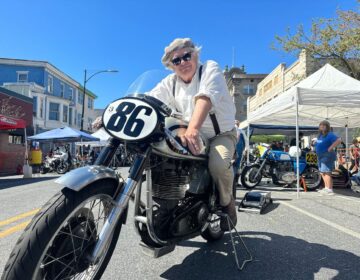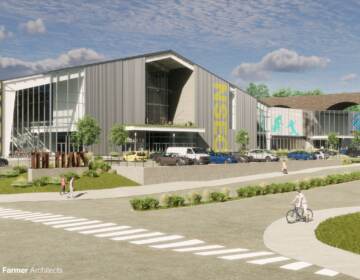Tiny, hidden Wharton Esherick Museum gets $10M windfall
The tiny, hidden American Craft museum in a forest outside Malvern, Pa., has received a $10 million endowment gift from Windgate Foundation.
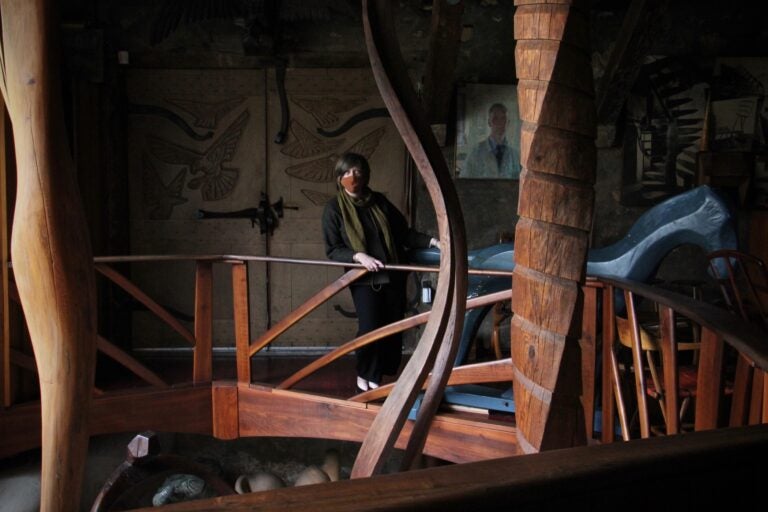
Julie Siglin looks at the sculptures displayed in Wharton Esherick's home studio. (Emma Lee/WHYY)
The Wharton Esherick Museum, tucked into the woods of Valley Forge Mountain outside Malvern, Pennsylvania, has received a $10 million endowment gift from the Windgate Foundation.
The artist house and studio museum of the seminal woodworker of the American Studio Craft Movement normally operates on an annual budget of $400,000. This gift is 25 times that amount.
“This is completely transformational,” said executive director Julie Siglin. “It’s an endowment. We will be able to draw 4% [annually,] which is our existing budget.”

Wharton Esherick began building, by hand, his home and studio in 1926 and kept at it for 40 years. Every inch of the small building, built on a steep slope overlooking a forest, was crafted personally by Esherick, often using hand tools to carve organic shapes and sometimes outlandish stunts of design: the central, spiral staircase projecting out of a twisted upright log strikes many visitors with awe and fear.
Visitors will be hard-pressed to find a right angle anywhere in the house.
“Wharton said anybody can draw a straight line. It’s when you draw a curve that you have to start to think,” said Siglin.
The windfall endowment will allow the museum to begin a process of transforming its campus of buildings into a visitor experience that will be more inviting and, Siglin hopes, more profound.
The Wharton Esherick Museum is more than the eccentric studio. There are three buildings of note on the property. The farmhouse where Esherick and his wife Letty originally lived and raised their children is down the slope from the studio. He ultimately added a rounded, multi-colored silo, which is used as a living space, to the studio.
When he started to become successful, attracting large-scale art and furniture commissions, Esherick built a larger workshop in 1954, right next to the studio.
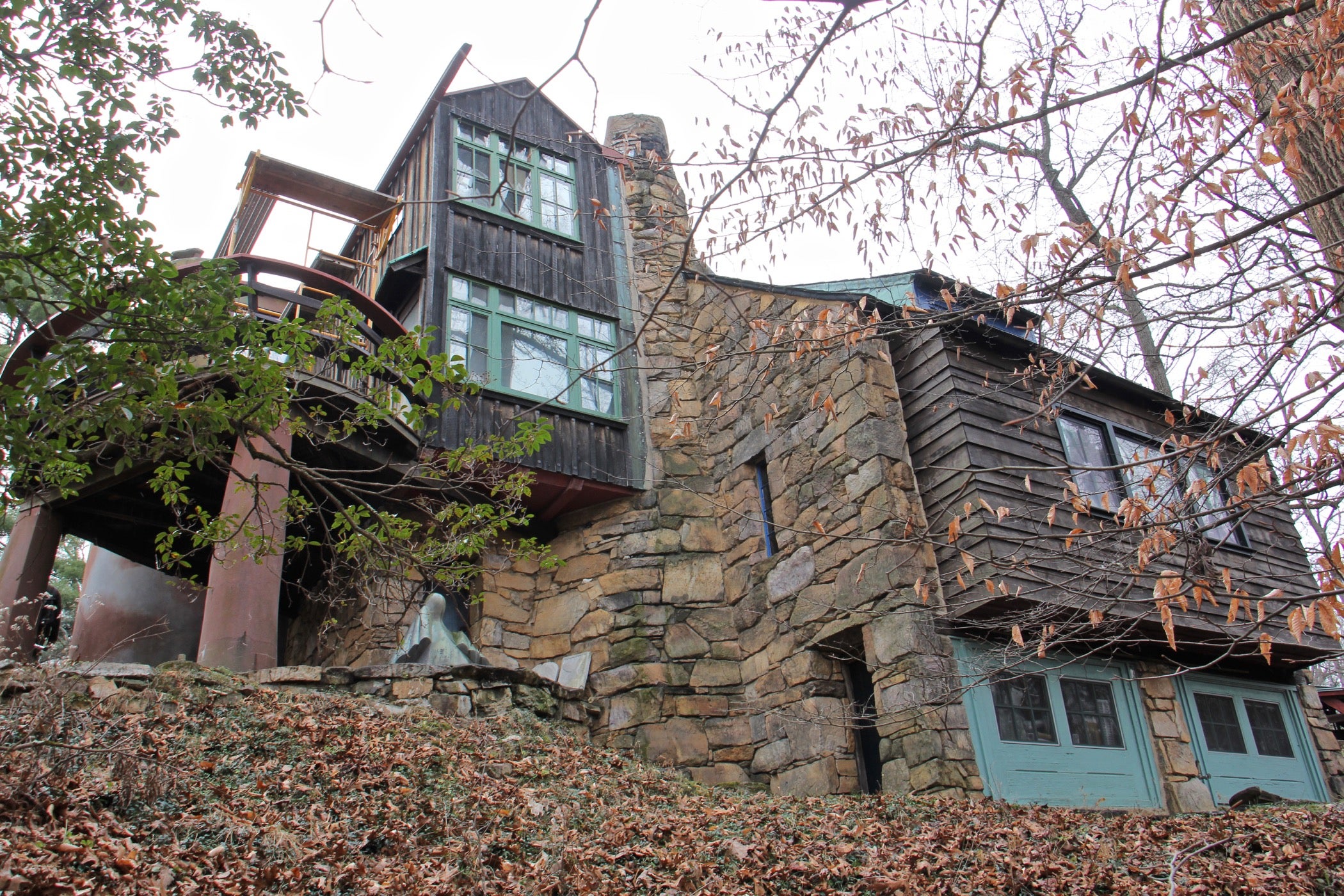
That larger workshop was designed by famed architect Louis Kahn, with whom Esherick would later work on the Margaret Esherick House in Chestnut Hill. Both the original studio and the workshop are registered historic landmarks.
Shortly after Esherick died in 1970, his daughter and son-in-law turned the site into a museum. They took up residence in the workshop and made the studio available for guided tours, for visitors who could find the place.
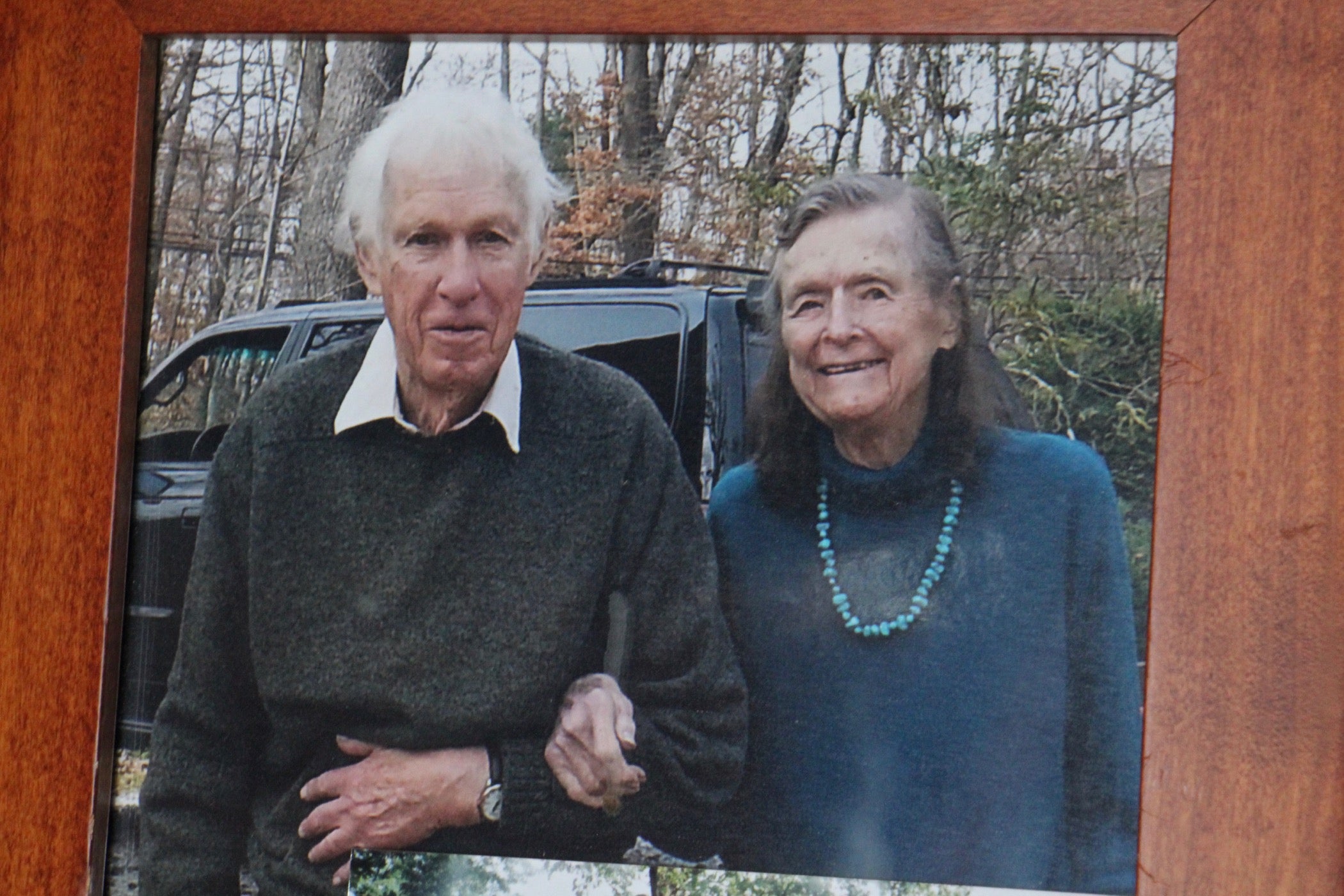
“The family actively positioned it as a secret Chester County gem,” said Siglin. “We weren’t doing a lot of marketing. It was word of mouth.”
Esherick’s daughter, Ruth Esherick Bascom, died in 2015 at age 93. Last October, her husband Mansfield “Bob” Bascom died at 96. The converted workshop they lived in for a half-century is now being inventoried for previously unknown pieces of Esherick furniture and converted, once again, into museum space.
“Ruth and Bob’s vision was to preserve the house, studio and grounds so those interested in art could share and enjoy it. That is our hope, too, and a big reason for this gift,” said Windgate Foundation board chair Robyn Horn in a statement. “If the Wharton Esherick Museum does not inspire you during your visit, you must not be paying attention.”
A master plan was devised earlier this year and completed on March 11, just days before the museum was forced to close its doors due to the pandemic. The plan would turn the original farmhouse down the hill — called Sunekrest — into a visitor center, and the Kahn workshop into an event and programming space. The Esherick studio would not be altered.
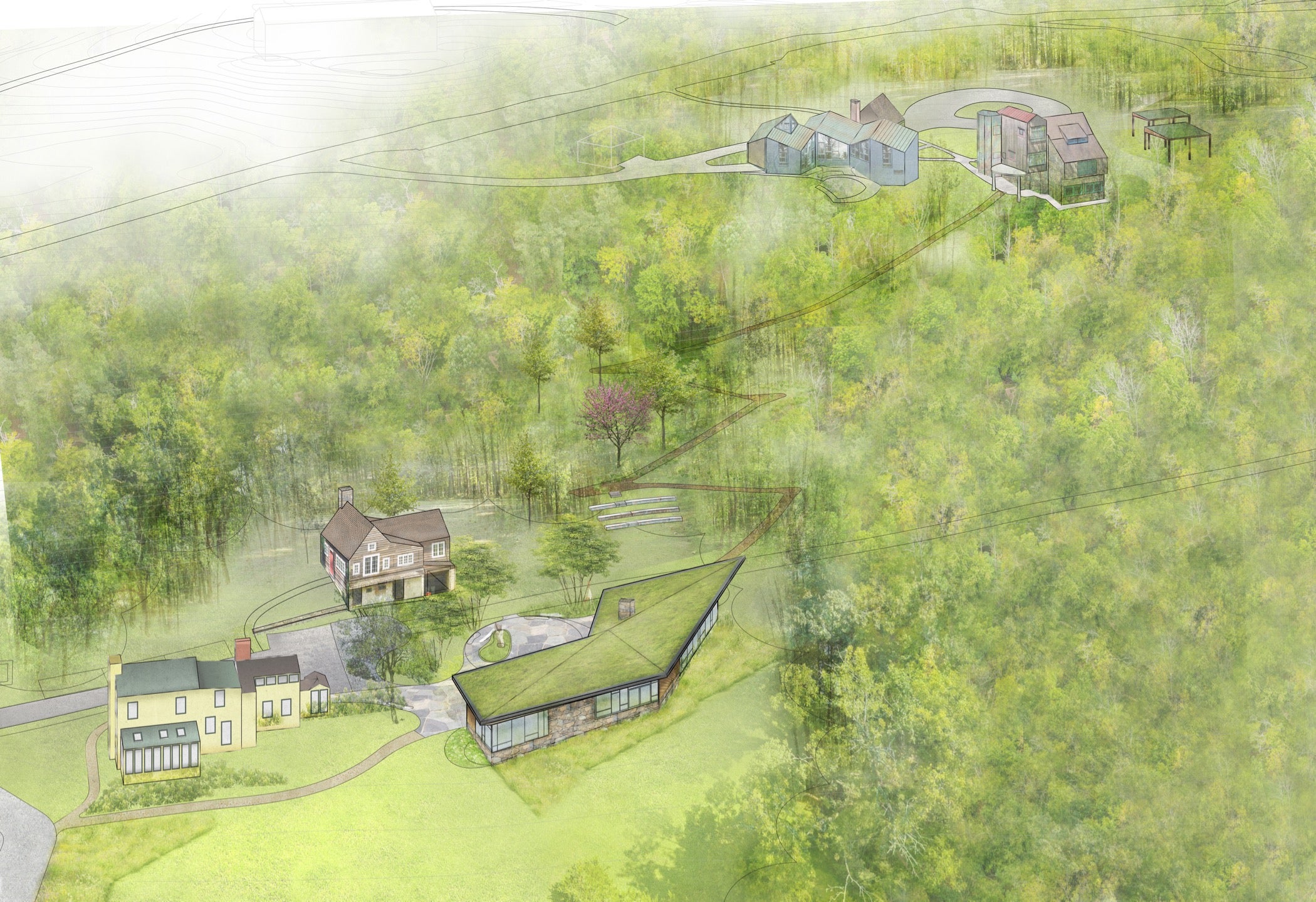
The challenge is connecting the Sunekrest farmhouse with the studio. They are separated by about 100 yards up a very steep slope. They are almost invisible to each other due to the thick growth of trees. The plan is to build a wheelchair-accessible boardwalk path that would mimic the route Esherick would take as he walked from house to studio.
“His daily commute would have been to just ramble right through the woods, straight up the hill to his studio,” said Siglin. “Wharton sourced much of his material from these very woods, so we can do education about that.”
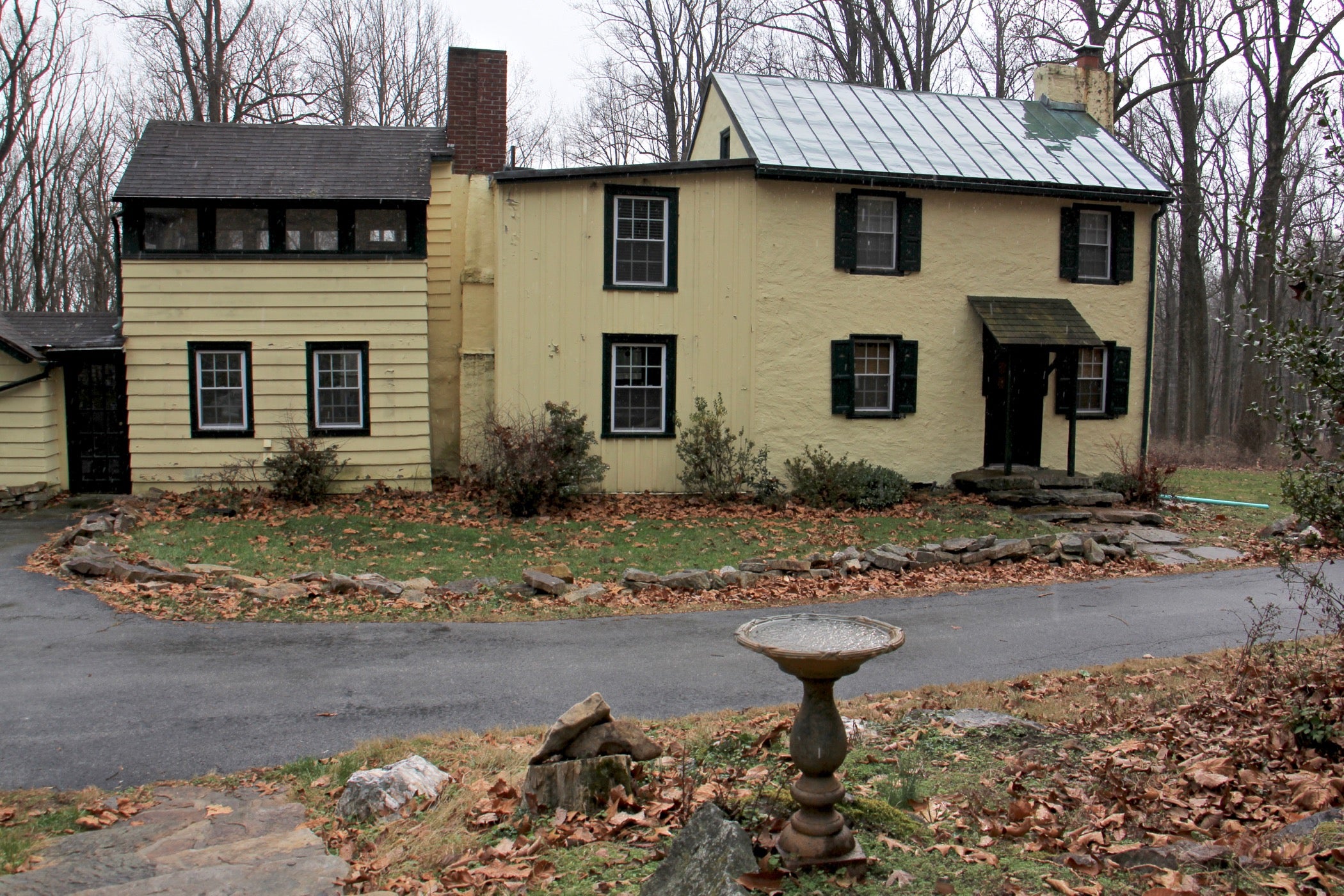
Visitors to the studio have always been limited to small guided docent tours. None of the objects, furniture or architectural elements are protected in glass cases or behind velvet ropes — everything is within reach and can be directly interacted with — so the size of touring groups is small. That will not change with the new vision for the museum.
“You’re in these domestic spaces that are crammed to the gills with Wharton’s work. He made the switch plates, the stairs, the walls, the ceiling, the hand-carved toilet seat,” said Siglin. “Every single object, angle and surface in this studio was an opportunity for Wharton to make art. So you are literally enveloped in this man’s creative bent.”
Siglin said visitors are often curious about Esherick’s life, but while inside the studio they are too busy “craning their necks” to take in as much as possible. Afterwards, they have no place to go to process everything they saw, or to learn more about Esherick and his legacy. As the museum is currently set up, all they can do is return to their cars and leave.
The future vision of the museum buildings would engage visitors with education and activity at the visitor’s center before their appointed tour time. After the tour, there can be talks, hands-on workshops, and a forest path to wander and reflect on what they experienced.

“It gives people a chance to step back, slow down, put the tech down, and connect with some quiet, some nature, and think about things made with evidence of the hand,” said Siglin.
The $10 million dollar endowment cannot be used for this planned transformation. Rather, Siglin said it gives the organization financial stability to be able to launch a major capital campaign. Right now there is no timeline for that fundraising effort; Siglin wants to wait until the pandemic passes, then leverage the museum’s 50th anniversary to sell its future vision. She’s putting her hopes on 2022.

Get daily updates from WHYY News!
WHYY is your source for fact-based, in-depth journalism and information. As a nonprofit organization, we rely on financial support from readers like you. Please give today.




